Did you miss out on the 8th Annual BRAIN Initiative Meeting last month? Catch up here!
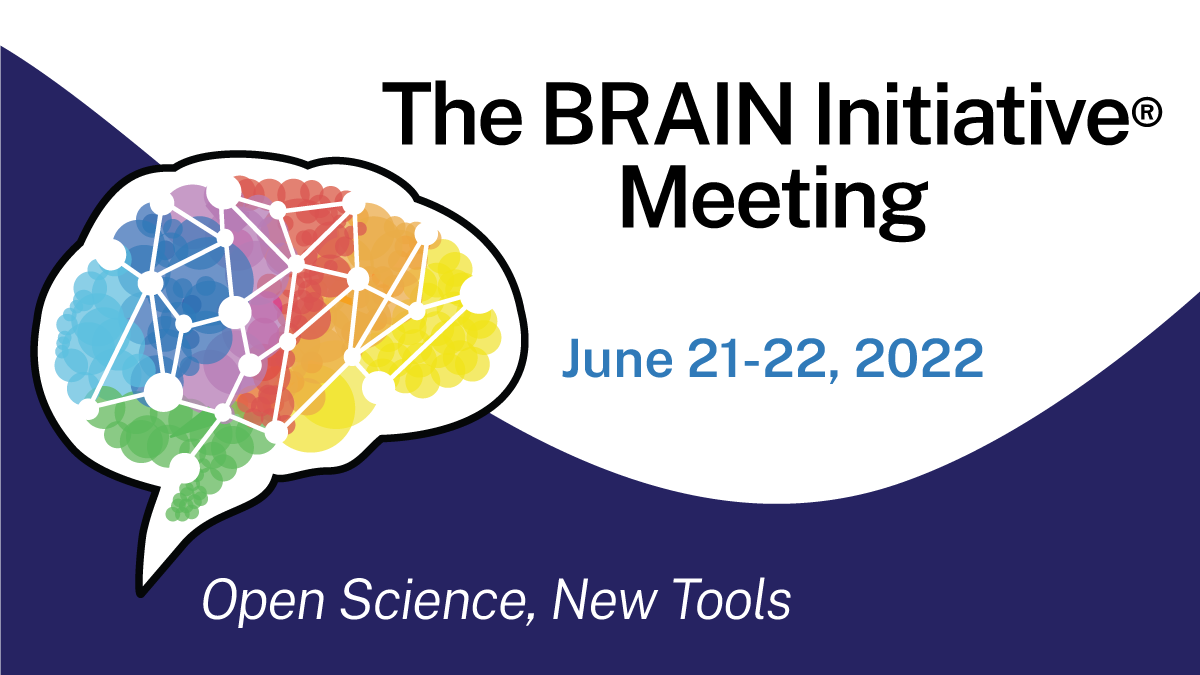
Figure 1. The 8th Annual BRAIN Initiative Meeting
The 8th Annual Brain Research Through Advancing Innovative Neurotechnologies® (BRAIN) Initiative Meeting was virtually held June 21-22, 2022, following continued precautions against COVID-19. As seen over the past two years, virtual attendance for the BRAIN Meeting remained high, with over 1,400 investigators, trainees, agency representatives, members of the media, non-government organizations, and members of the public participating from around the world — many of whom would not have been able to join had it been an on-site event. An additional 1,200 registrants plan to access the meeting content at some point over the next year – an option available to all.
Dr. John Ngai, Director of the NIH BRAIN Initiative, kicked off the meeting by emphasizing the importance of virtual connection and scientific collaboration leading the way to amazing new innovations in neuroscience – which would be highlighted throughout the two-day meeting program.
Plenary Keynotes
Each of the plenary keynotes focused on new and exciting breakthroughs in science and technology made possible by the Initiative. There were three plenary keynote presentations, each with a Q&A portion at the end.
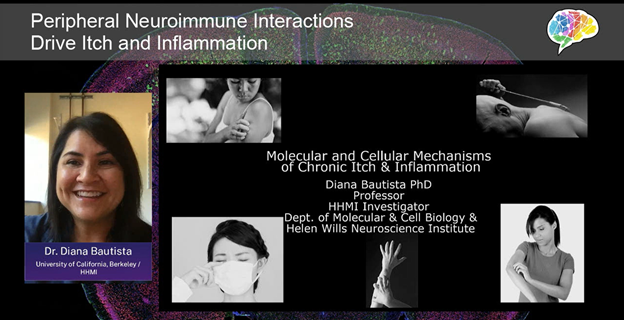
Figure 2. Plenary speaker Dr. Diana Bautista highlighting the neural mechanisms of itch.
Dr. Ngai introduced the first plenary talk by Dr. Diana Bautista of the University of California, Berkeley. Her presentation, titled “Peripheral Neuroimmune Interactions Drive Itch and Inflammation,” discussed chronic itch in relation to skin conditions. She began by describing the difference between acute itch and chronic itch, as well as the itch-scratch cycle. Dr. Bautista stressed that one in ten people will suffer from chronic itch in their life; however, chronic itch has many causes and few effective treatments. Her lab aims to understand the neural mechanisms of itch to determine how itch triggers affect sensory neurons, how neurons promote chronic itch, and how chronic itch diseases promote changes in the peripheral and central nervous systems. Dr. Bautista and her team study atopic diseases and the somatosensory system by using mice as model systems, or primary human cells like immune cells, skin cells, or primary sensory neurons. The second half of her talk highlighted the lab’s recent efforts to uncover what biomarkers and interactions between skin, neurons, and immune cells in the skin influence itch behaviors.
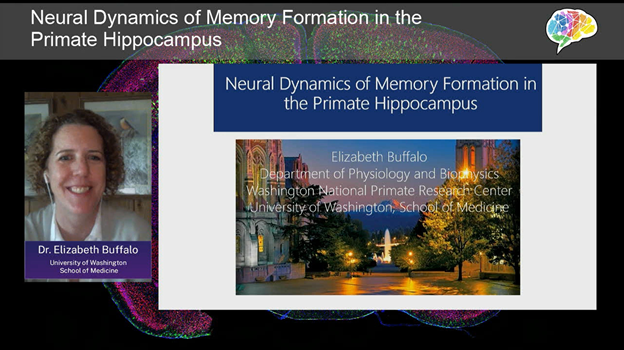
Figure 3. Dr. Elizabeth Buffalo’s plenary keynote on memory, spatial navigation, and hippocampal research.
Later in the afternoon on day one, Dr. Elizabeth Buffalo of the University of Washington School of Medicine gave the plenary presentation, titled “Neural Dynamics of Memory Formation in the Primate Hippocampus.” Dr. Walter Koroshetz, Director of the National Institute of Neurological Disorders and Stroke (NINDS) introduced Dr. Buffalo and her work on memory and spatial navigation. Dr. Buffalo opened her talk with a brief history of hippocampal research over the last few decades that led into her current studies. Her lab focuses on three lines of research: spatial representations in the monkey temporal lobe, using virtual reality to elucidate the monkey cognitive map, and hippocampal activity related to motor behaviors. Dr. Buffalo played videos to show how the lab uses virtual reality to trace monkey scan paths and determine where monkeys look when specific neurons fire, with the help of heat maps and patterns. Her lab found that monkey hippocampal cells showed spatial correlation in structured virtual reality tasks, and that hippocampal neurons represent behaviorally relevant features of ongoing experiences. Dr. Buffalo closed by discussing what critical areas researchers need to examine in future hippocampal studies, such as response novelty, learning, timing, reply, and coordination across time scales.
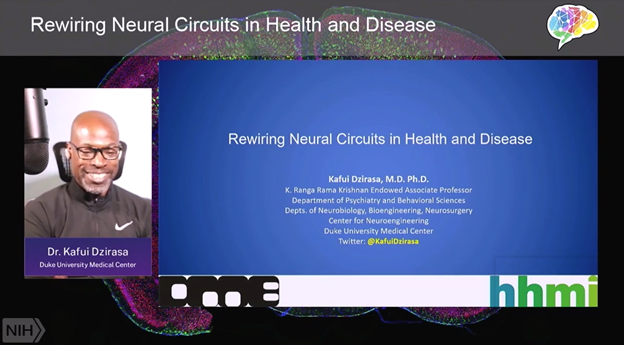
Figure 4. Dr. Kafui Dzirasa’s plenary keynote, presenting research on neural circuits and risk prediction.
On the morning of day two, Dr. Ngai introduced Dr. Kafui Dzirasa from Duke University Medical Center, who gave the last plenary keynote presentation, “Rewiring Neural Circuits in Health and Disease.” Dr. Dzirasa walked through a set of experiments that used statistical forecasting to examine if activity in one brain area can predict future or explain past activity in another brain area. He explained the challenge of risk prediction and how intervention could help prevent mental health conditions like depression, anxiety, bipolar disorder, or post-traumatic stress disorder (PTSD). Dr. Dzirasa’s lab investigated risk prediction by recording neural activity in mice during periods of rest and exposures to stressors. Recording multiple brain sites simultaneously revealed synchronized activity in specific neural circuits during anxiety-like behaviors in mice, including lack of sleep. The team determined which mice were more susceptible to mental illness after stressors, compared brain state maps in susceptible and non-susceptible animals, and demonstrated which neural circuits were associated with behaviors that are demonstrative of mental illness. Now, Dr. Dzirasa and his team are examining how to prevent the negative impacts of stress exposure by experimenting with closed-loop optogenetics techniques to try to increase resilience to stress.
Symposia Talks
In addition to the plenary talks, there were six symposia sessions during the 8th Annual BRAIN Meeting.
Symposium 1: A User’s Guide to the BRAIN Initiative Cell Census Network (BICCN) Resources
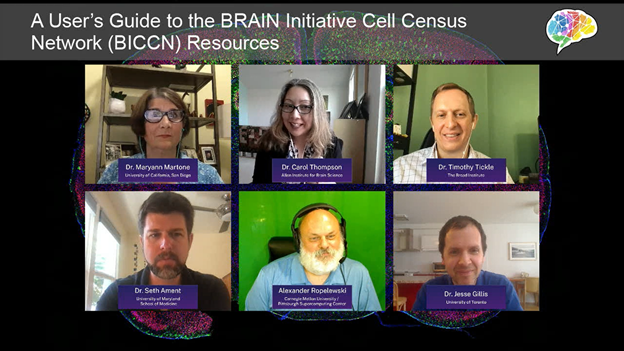
Figure 5. The symposium panel discussing BICCN resources and multimodal data.
The first symposium session was moderated by Dr. Maryann Martone (University of California San Diego) and included five additional speakers who discussed multimodal data and the BICCN, a large-scale cell census that integrates molecular, anatomical, and functional data to multimodal data.
Dr. Carol Thompson (Allen Institute for Brain Science) began the session with a broad description of how BICCN uses the BRAIN Cell Data Center (BCDC) to coordinate data submission and standards and helps make data accessible to researchers. Next, Dr. Timothy Tickle (The Broad Institute) discussed how researchers work together on large datasets. He emphasized how cloud data ecosystems combine data and computing in a secure environment while keeping everyone in one place to conduct analyses together and make cloud native resources that scale. Dr. Seth Ament (University of Maryland School of Medicine) gave an overview of the genomic archive for the BRAIN Initiative, describing how it provides access to raw and uniformly processed genomic data and associated metadata to transport massive amounts of data and analyze results.
Alexander Ropelewski (Carnegie Mellon University and Pittsburgh Supercomputing Center) presented on the Brain Image Library, a national public resource with nearly ten million files that provides a centralized repository for brain science data. He explained how the library provides user access and support, and how its data scope includes whole and partial brain image datasets of mouse, human, and other primates. Dr. Jesse Gillis (University of Toronto) presented on MetaNeighbor, an approach that helps ensure the relationships among gene expression levels for all samples in a given cell cluster are found consistently across datasets. MetaNeighbor can be applied across all BICCN data and assesses the consistency of gene expression levels for all cells with the same annotation across datasets. Finally, Dr. Maryann Martone (University of California San Diego) gave her presentation on standards and the BICCN – in particular, how FAIR (findable, accessible, informative, and reusable) principles are necessary because BICCN has multimodal and multiscale data distributed across multiple archives generated by dozens of labs.
Symposium 2: Toward More Diverse Participants in Human Neuroimaging Research: Opportunities and Challenges
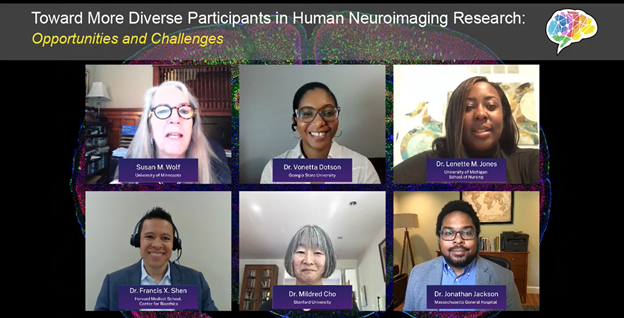
Figure 6. The symposium panel taking questions on diversity in neuroimaging research.
In parallel, Dr. Susan Wolf (University of Minnesota) moderated a symposium with five speakers who discussed emerging technology and the ethical, legal, and social implications of expanding human neuroimaging studies to address a lack of diverse research and datasets.
First, Dr. Vonetta Dotson (Georgia State University) presented on the implications of lack of diversity in cognitive and affective neuroscience research. She encouraged researchers to increase their diversity of research samples, make better use of existing data, and be transparent when reporting. Next, Dr. Lenette Jones (University of Michigan School of Nursing) discussed the opportunities and challenges in recruiting more diverse participants in human neuroimaging research. Her presentation demonstrated the lack of existing literature about historically underrepresented groups in neuroimaging research.
Dr. Francis Shen (Harvard Medical School) outlined the potential downsides that may emerge when including more diverse participants in neuroscience research, such as scientific racism through problematic comparisons of brain structure and function. He emphasized that the research community can anticipate and address these downsides now by reflecting on how it engages diversity and implementing safeguards for data. Likewise, Dr. Mildred Cho (Stanford University) discussed the diversity problem in genomics studies and how to be mindful of study design and bias. She recommended assessing the benefits of research to underrepresented communities and being conscious of the limitations of measuring diversity. Lastly, Dr. Jonathan Jackson (Massachusetts General Hospital, Harvard Medical School) gave a talk on what to do after researchers recognize sample bias. He encouraged researchers to be aware and mindful of their study design by using plain language and making participation easy without resorting to quick fixes.
Symposium 3: Neural Mechanisms that Generate Internal States Across Organisms
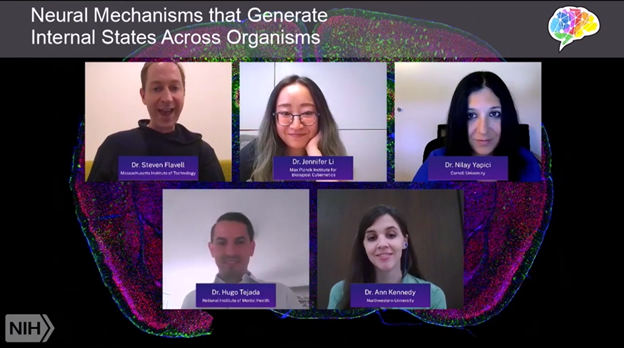
Figure 7. The symposium panel’s speakers in a group discussion on neural mechanisms of behavior.
Later on in the afternoon, Dr. Steven Flavell (Massachusetts Institute of Technology) moderated a symposium featuring four additional speakers who study the nervous systems of animals and how their internal states influence how they behave and process sensory information.
Dr. Jennifer Li (Max Planck Institute for Biological Cybernetics) gave the first presentation on how natural behaviors – like spatial navigation, social behavior, feeding, and reward – are organized by brain states. Her lab uses novel imaging systems to study internal state dynamics in behaving larval zebrafish. Next, Dr. Nilay Yapici (Cornell University) discussed how her lab investigates neural control of food indigestion in fruit flies and mice to answer how the brain regulates food intake. She also described some of the imaging tools her lab uses to see how neurons respond to sugar ingestion.
Dr. Steven Flavell (Massachusetts Institute of Technology) presented on the neural circuits that control long-lasting behavioral states in roundworms. He explained how his lab uses large-scale recording technologies to measure behavioral information and build models to relate neural activity to behavior. Dr. Hugo Tejeda (National Institute of Mental Health) discussed prefrontal cortical endogenous opioids and threat-associated behavioral states. His lab studies dynorphin cells/kappa-opioid receptor systems to understand how mice behave when exposed to a threat. Dr. Ann Kennedy (Northwestern University) wrapped up the session by discussing the role of the hypothalamus in social behaviors and motivational states. She described her research on how internal states of mice (such as past experiences, development, diseases, stress, or hunger) influence how they interact with the world. She also discussed how sensory cues (such as water deprivation) relate to resulting behaviors (such as amount of water drunk).
Symposium 4: Towards the Responsible Research and Innovation of Novel Neurotechnologies across Domains: Considerations of Agency, Responsibility, and Access
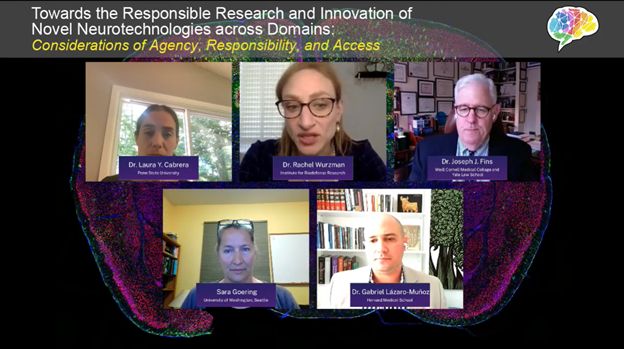
Figure 8. The symposium panel discussing neuroethical frameworks and implications.
Simultaneously, Dr. Laura Cabrera (Penn State University) moderated a symposium that consisted of five additional speakers to explore the neuroethical implications of novel neurotechnologies while discussing philosophical, ethical, and legal findings from three BRAIN Initiative studies.
(Penn State University) opened the session by discussing the Institute of Electrical Electronic Engineers (IEEE) Brain Neuroethics Subcommittee, describing neuroethics frameworks that focus on neurotechnologies, particularly devices. She explained how researchers can build on existing neuroethics guidelines, and how frameworks can move neuroscience tools and technologies into applications beyond medical ones. Next up was Dr. Rachel Wurzman (Institute for Biodefense Research), who discussed military neurotechnology and how military operators face unique challenges that can require ethical guidance. Her current efforts with neuroethical frameworks assess neurotechnology capabilities, identify gaps of current technology, evaluate benefits of current technology, and help introduce ethical concepts and operationalize neuroethics during the tool design process. Dr. Jacob Robinson (Rice University) presented on the International Brain Initiative (IBI)-IEEE Neuroethics Working Group by describing different ways the group applies general ethical considerations. He gave examples of challenges in medical neurotechnologies, such as cybersecurity, confidentiality, undermining autonomy, reversibly, and long-term effects.
Dr. Sara Goering (University of Washington, Seattle) presented on agency and acting intentionally. She discussed the dimensions of agency, like responsibility, authenticity, trust, and privacy, and how patients overcome barriers like uncertainty, frustration, sense of self, and human agency. Dr. Joseph J. Fins (Weill Cornell Medical College and Yale Law School) talked about cognitive restoration, neuroethics, and human rights by reviewing a study about cognitive processing speed. The study conducted pre-op and post-op interviews to investigate the effects of brain injury on personal identity, consent process and proportionality, and agency. Lastly, Dr. Gabriel Lázaro-Muñoz (Harvard Medical School) discussed patient perspectives on post-trial neurotechnology access. He explained that in the U.S., there is no legal obligation to provide continued access to patients who benefited from devices in clinical trials, and he gave an overview of patient survey data on how post-trial access should be handled from the patient’s perspective.
Symposium 5: Advancing our Understanding of the Brain and Behavior Through Connectomics
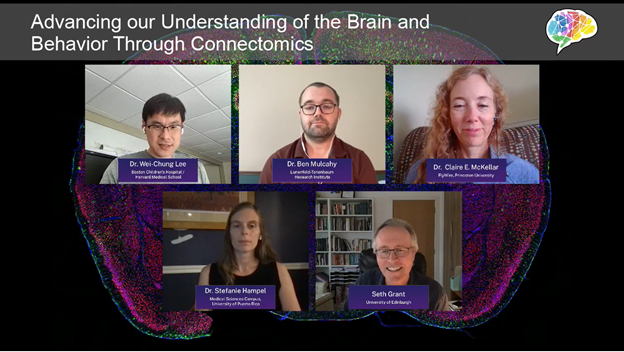
Figure 9. The symposium panel taking questions on their connectomics research.
On day two, Dr. Wei-Chung Lee (Boston Children’s Hospital and Harvard Medical School) moderated a symposium co-organized by Dr. Olivier Berton, Program Officer at the National Institute of Drug Abuse’s (NIDA) Integrative Neuroscience Branch, Dr. Jonathan Pollock, Chief of the Genetics, Epigenetics, and Developmental Neuroscience Branch at NIDA, and Dr. Claire McKellar, Director of Operations and Community for FlyWire (Princeton University). It included six talks that shared progress in connectomics and how tools, platforms, and analyses can inform analysis of circuits from sensory processing to the control of behavior.
First, Dr. Ben Mulcahy (Lunenfeld-Tanenbaum Research Institute) discussed developmental and motor circuit remodeling and how his team studies this without disruption to motor output. He described how they conduct programmed wiring and gradual remodeling of juvenile roundworm motor neurons. Dr. Claire McKellar (Princeton University) followed with a discussion on human-artificial intelligence (AI) collaboration. She discussed how Princeton designed a new alignment and segmentation pipeline to improve how neurons could be reconstructed using AI. She also covered the limits of AI – and how the FlyWire app proofreads 3D cell fragments by dropping points on parts of neurons researchers want to separate apart. Dr. Wei-Chung Lee (Boston Children’s Hospital and Harvard Medical School) described how synaptic writing motifs in the posterior parietal cortex of mice support decision-making, and how the brain transforms visual/sensory information into behavioral choices, like turning or navigating. He explained electron microscopy as an imaging modality to reconstruct cells as part of navigational decision-making.
Dr. Stefanie Hampel (University of Puerto Rico) discussed a study that looked at the grooming behavior in fruit flies to understand how movement sequences are produced. The study defined parallel-projecting mechanosensory neural pathways that elicit head grooming. Dr. Michael Reiser (Howard Hughes Medical Institute and Janelia Research Campus) gave an overview of vision and brain organization by discussing his work on Lobula Columnar neurons in flies. His lab uses a variety of techniques, including electrophysiology, calcium imaging, and computational analyses, to map visual projection neurons in the fly brain. Dr. Seth Grant (University of Edinburgh) discussed his studies on protein composition of individual synapses at brain-wide scale and the synaptome architecture of the mouse brain. He discussed what his team discovered during synaptome mapping, and how they are investigating synaptome architecture across the lifespan since it is constantly changing.
Symposium 6: Behavioral Quantification: From Tracking to Understanding
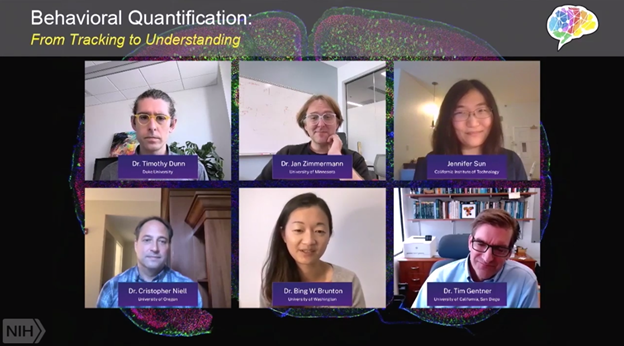
Figure 10. The symposium panel speakers discussing tools (top three pictured) and applications (bottom three pictured).
Concurrently, Dr. Timothy Dunn (Duke University) moderated the sixth symposium session about recent progress in behavioral quantification technologies, and how tool developers and practitioners analyze and model behavior to shape how the brain is studied and understood. The session included three speakers commenting on tools and three speakers discussing tool applications.
Dr. Jan Zimmerman (University of Minnesota) discussed the challenges and limitations of tracking non-human primates, such as the need for large camera count systems. He also described the differences between recording approaches and their pros and cons. Dr. Timothy Dunn (Duke University) gave an overview of the datasets and software his lab uses for 3D behavior tracking, such as the 3D Aligned Neural Network for Computational Ethology (DANNCE). DANNCE predicts 3D positions of joints on an animal’s body and tracks them over time. Jennifer Sun (California Institute of Technology) focused on methods that can quantify behavior from Pose data. She discussed task programming and how it unifies the representation learning framework.
Dr. Cristopher Niell (University of Oregon) discussed the neural circuits that guide visual behavior. He described different approaches that his lab uses to study the impact of movement on visual function and how the visual system processes complex scenes. Dr. Bing Brunton (University of Washington) presented on generative and agent-based models of behavior. She used behavior examples and discussed the underlying neural dynamics, while giving an overview of what her lab learned from the different modeling methods. Lastly, Dr. Tim Gentner (University of California, San Diego) described studies where his lab has been applying a variety of machine learning methods to better understand neural bases of communication. In particular, he described his lab’s studies involving songbirds and their communication systems.
Poster Sessions
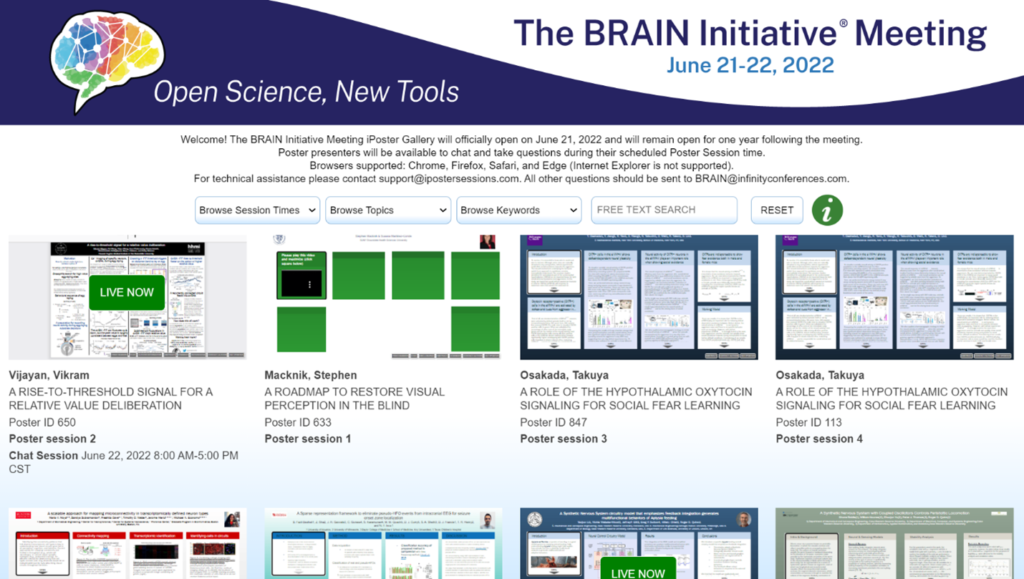
Figure 11. The 2022 BRAIN Initiative Meeting poster hall
At this year’s BRAIN Initiative Meeting, there were four dedicated poster sessions. Attendees explored a virtual poster gallery (pictured above), where over 400 posters spanned a variety of BRAIN scientific areas such as cell types, neuroethics, interventional tools, integrated approaches, neural activity monitoring, and more. During each one-hour poster session, poster presenters were available to video chat and take questions on their research. Some posters also had pre-recorded audio narration embedded so attendees could listen to the presenter describe their research. The virtual platform allowed attendees to filter by topic areas, leave comments, and receive a downloadable poster file via email. In addition to the poster gallery, the platform also had an abstract book organized by topic area where attendees could easily browse project summaries and determine which posters they wanted to view.
Trainee Highlight Awards
This year 60 trainees were highlighted during the 8th Annual BRAIN Initiative Meeting. Thirty selected awardees received the opportunity to present approximately four-minute “flash” talks in concurrent sessions in addition to presenting their scientific posters that outlined their specific contribution to a broader BRAIN Initiative project. These sessions were moderated by Director and Deputy Director of the NIH BRAIN Initiative, Dr. Ngai and Dr. Andrea Beckel-Mitchener, respectively, as well as Dr. Michelle Jones-London (NINDS) and Dr. Jay Churchill (National Institute of Mental Health). An additional 30 trainees were Honorable Mention recipients and had the opportunity to present their scientific posters during the dedicated poster sessions.
Focused Topic (Specialty) Sessions
Winners of the 2022 BRAIN Initiative Challenge
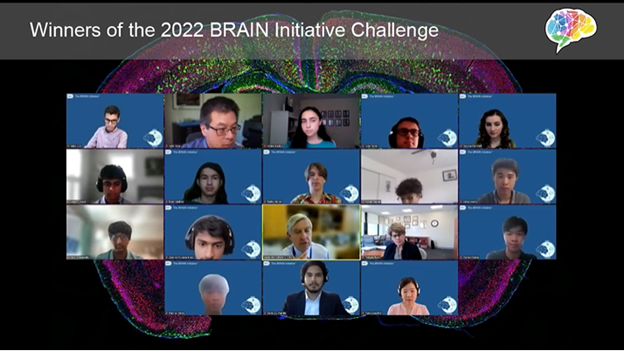
Figure 12. Dr. Ngai with the winners of the 2022 BRAIN Initiative Challenge.
On the first day of the meeting, the NIH BRAIN Initiative announced the winners of the 2022 BRAIN Initiative Challenge, a contest where high school students were asked to share their perspectives, via essays or videos, envisioning current and/or near-future states of brain technologies and the ethical dilemmas they may bring. The goal was to increase the public’s perception and understanding of neuroscience and its ethics. The session recognized ten winners of the 2022 BRAIN Initiative Challenge and gave five honorable mentions, all of whom can be found on the Challenge’s website. Winners read an excerpt from their essays or described their videos.
Crafting Neuroethics Content for BRAIN Initiative Funding: Investigator Experiences
The final session of day one was organized by the International Neuroethics Society (INS), a BRAIN Initiative Alliance member dedicated to encouraging and inspiring research and dialogue on the responsible use of advances in brain science. Dr. Laura Speckler Sullivan (Fordham University) and Dr. Anna Wexler (University of Pennsylvania) moderated the session.
The session featured three BRAIN-funded neuroethicists, Dr. Sara Goering (University of Washington), Dr. Cynthia Kubu (Cleveland Clinic), and Dr. Gabriel Lázaro-Muñoz (Harvard University), who spoke about their experiences forging collaborations with investigators in the BRAIN community. The panelists introduced themselves and spoke briefly about what neuroscience researchers must consider when taking on projects that may have ethical implications. After initial remarks from the speakers, attendees were able to chat with the panelists through breakout rooms.
Show Us Your BRAINs! Photo & Video Contest Winners Announcement
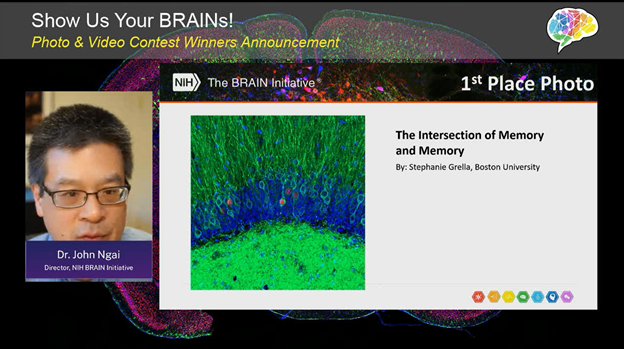
Figure 13. Dr. Ngai announcing the 1st place photo in the Show Us Your BRAINs! Photo & Video Contest.
Following Dr. Dzirasa’s plenary presentation on day two, Dr. Ngai announced the top three photos and top three videos of the 2022 BRAIN Initiative Show Us Your BRAINs! Photo & Video Contest. You can view the winners and their remarkable entries on the contest’s webpage. Each year, regardless of discipline, career stage, or funding source, the Initiative invites all those engaged in the study of the brain to enter cool, artistic, and eye-catching image(s) or short video(s).
The Brain Mappers Film Screening + Discussion
This session, moderated by Carol Lynn Alpert (Director, Strategic Projects Group, Museum of Science), screened The Brain Mappers, winner of a 2022 Silver Telly Award for non-broadcast educational film. After the screening, the film’s “stars” and contributors discussed the making of the film, what went on behind the scenes, and how the quest evolved. The Brain Mappers is a film by the Museum of Science (Boston) and Emmy-Award-winning NOVA filmmaker Larry Klein, who set out to tell this story about the inspired work of several connectomics teams, with first-person accounts from an array of talented BRAIN Initiative “early-adopters” – Dr. Gwyneth Card, Dr. Kristen Harris, Dr. Viren Jain, Dr. Bobby Kasthuri, Dr. Jeff Lichtman, Dr. Mariela Petkova, and Dr. Gerry Rubin.
Community Resources for Implementing FAIR in Your Research
This session, organized by Directors at the International Neuroinformatics Coordinating Facility (INCF), Dr. Matthew Abrams and Dr. Helena Ledmyr, discussed what Findable, Accessible, Interoperable, and Reusable (FAIR) data resources INCF offers. It also presented ways that researchers can get involved in the INCF network and activities such as training, career development, and standards and best practices for FAIR neuroscience.
Conclusion
The 8th Annual BRAIN Initiative Meeting was a great success! Sharing research is one of the best ways to push the fields of neuroscience and neurotechnology forward. Check out this NIH BRAIN Director’s Message to learn about Dr. Ngai‘s perspective and key take-aways on the 8th Annual BRAIN Initiative Meeting.

